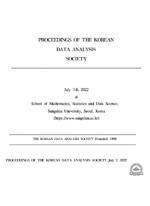Decomposition of the Dividend Model: from the Perspective of ESG and Firm Characteristics
- 한국자료분석학회
- 한국자료분석학회 학술대회자료집
- 2022년 하계학술대회 발표집
-
2022.0771 - 74 (4 pages)
- 이용수 27

키워드
초록
Over the past decade, firms of good ESG ratings, B+ and above, have shown consistently higher propensities to pay dividends compared to the poor ESG firms. The counter factual decomposition of Maarten(2010) decomposes the dividend difference between the good and the poor ESG group into the part that is attributable to firm characteristics and the residual part that is contributed by the pure ESG group effect. Our results indicate that there exists a significant difference in dividend payments between the two ESG groups that can not be explained by the traditional dividend model of Fama and French(2001). Good ESG firms are generally more mature, larger, profitable and less risky firms, all of which are the typical firm characteristics of dividend payers. Our hypothetical decomposition result suggests that the explanatory power of the firm characteristics is 87.6% and the remaining 12.4% is the ESG group effect. In more recent years, this portion of the ESG group effect has increased to 18.4% and particularly, the ESG group effect is most pronounced for the KOSDAQ firms for which the ESG group effect occupies 45.9% of the total effect. This suggests that acquiring good ESG ratings can make noticeable difference in adopting more shareholder friendly dividend policy.
목차
1. Introduction
2. Empirical Method
3. Main Results
4. Conclusion
References
참고문헌 (0)
등록된 참고문헌 정보가 없습니다.
해당 권호 수록 논문 (0)
등록된 수록 논문 정보가 없습니다.